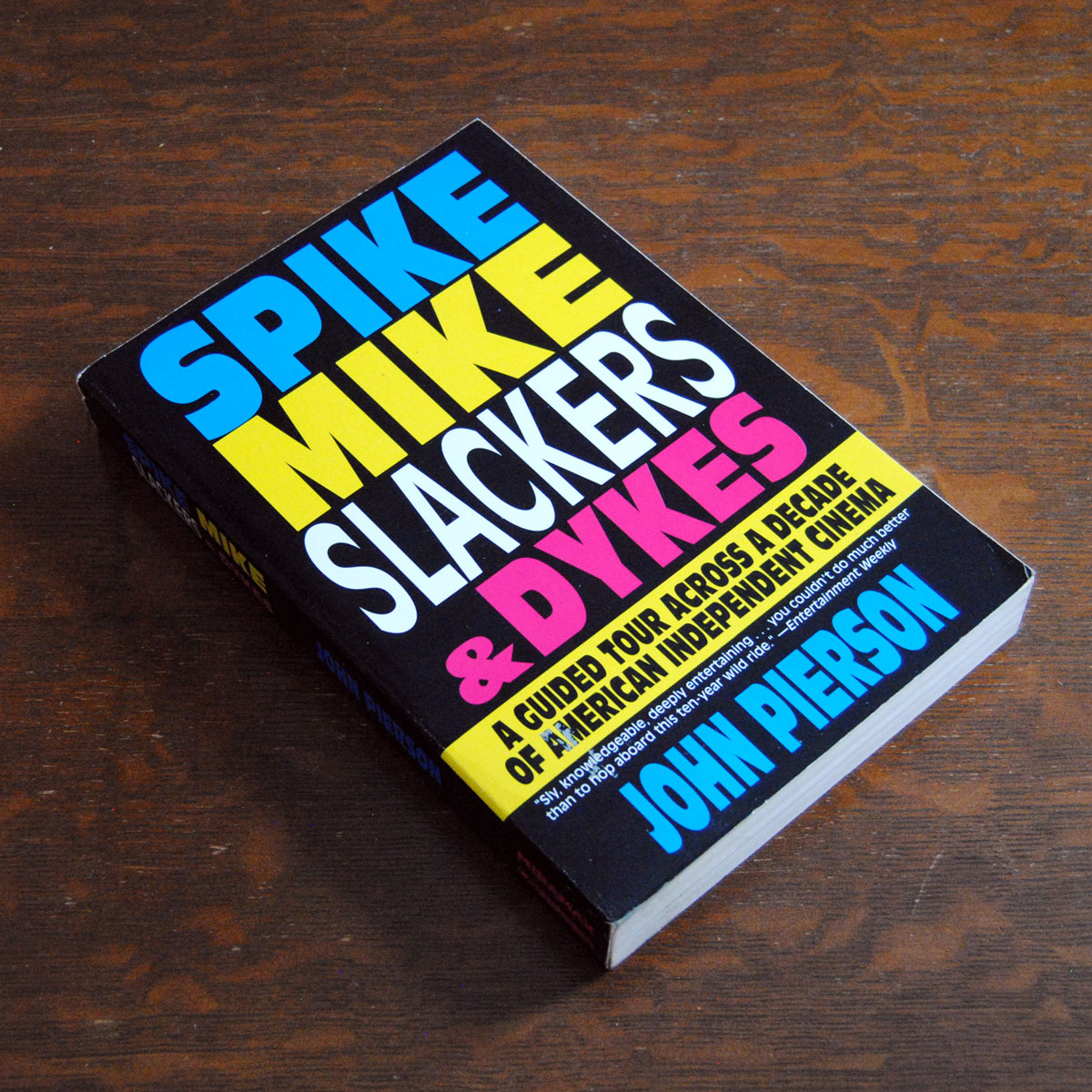
If you enjoy films, Spike, Mike, Slackers, & Dykes: A Guided Tour Across a Decade of American Independent Cinema, is a must-read. It’s also something I would highly recommend that aspiring filmmakers crack open.
Me? I’m not sure I fall into either camp, though I do dabble in film.
This book was recommended to me years ago. I believe it was even a gift from the recommender, a friend during college, which means this has been untouched on my shelf for about two decades.
I finally decided to see what it is all about. Despite not knowing the author John Pierson, this book is immensely broad and detailed in all the right places. Pierson discusses his personal journey with independent film, and he also talks about the details of budgeting and the broader strokes of the independent film industry during arguably its American apex.
Not only is this book a window into a period and an industry that flourished during that time, but Pierson also describes the innovators and eccentrics that made the art and the deals. This truly is “A Guided Tour Across A Decade of American Independent Cinema,” and it’s one that comes with enough first-hand, knowledgeable experience that it does feel a bit like seeing behind the curtain in Oz.
Throughout the book, you will come across many more titles of films you haven’t heard as those that you have. This is probably for the best. For aspiring filmmakers, this book can serve as both a guide as well as a cautionary tale. Not every title mentioned gets sold, makes a profit, or even recoups its expenses. Not every director has gone on to become a household name.

Truthfully, I enjoy film and have dabbled around the corners of hobbyist filmmaking with others. This book, to me, is a scary ghost of Christmas past for independent film. Even during this period of the highest of highs with Slacker, Pulp Fiction, She’s Gotta Have It, Roger & Me, and Clerks, the foundations of those successes are not easily built upon.
Truly, this book, written decades ago, captures what can only be deemed as the Golden Age of independent film in the mid-eighties through the mid-nineties. The current climate of streaming services would never allow such a culture of experimentation and risk-taking, and we will probably never see it again.
As I read this book, I was watching movies on many different streaming services or short films on YouTube. How any of it makes any money outside of a big theatrical release is anyone’s guess, and those big theatrical releases aren’t usually granted to independents.
Still, as scary as it is to read this book and think about the current, it is part of how we got here. That journey is still worth understanding. Pierson will give you that understanding, alongside his negotiation tactics, which you can learn from or avoid, a breakdown of independent film financing, how profits come from it, and more.
This was a book written by someone who loves film, and it was a joy to read as a result. Even as the prospects of tomorrow seem uncertain, at least we know where we came from. That’s vitally important as we take our next steps.
Even if you simply want to make small video content in your little corner of the internet, this book will be inspiring and helpful in some way. There’s also a list of many movies you’ve never heard of that might interest you enough to seek out, so there’s that aspect of it all, too.
Read the Secret File of technical information and quotes from Spike, Mike, Slackers & Dykes.